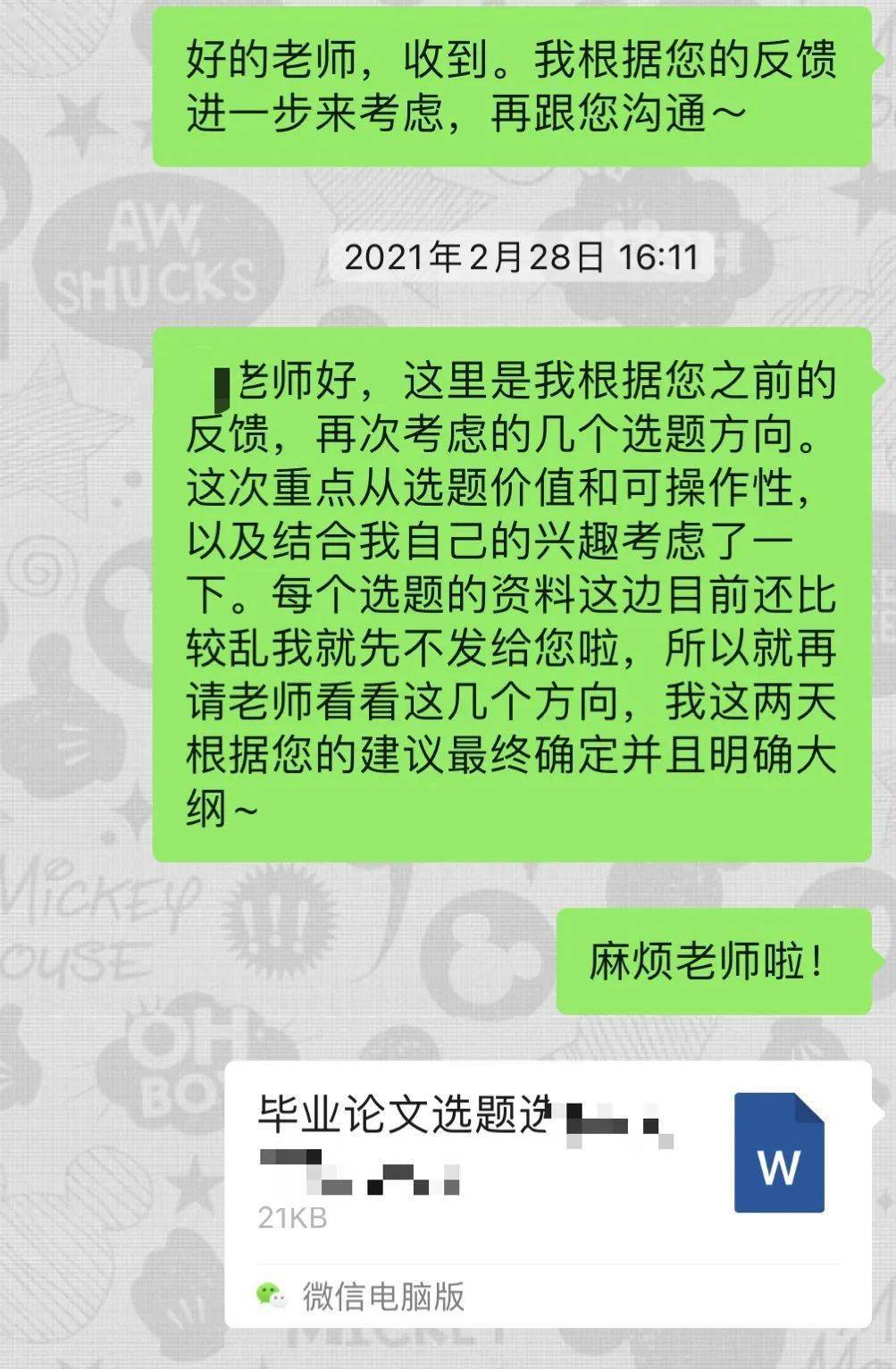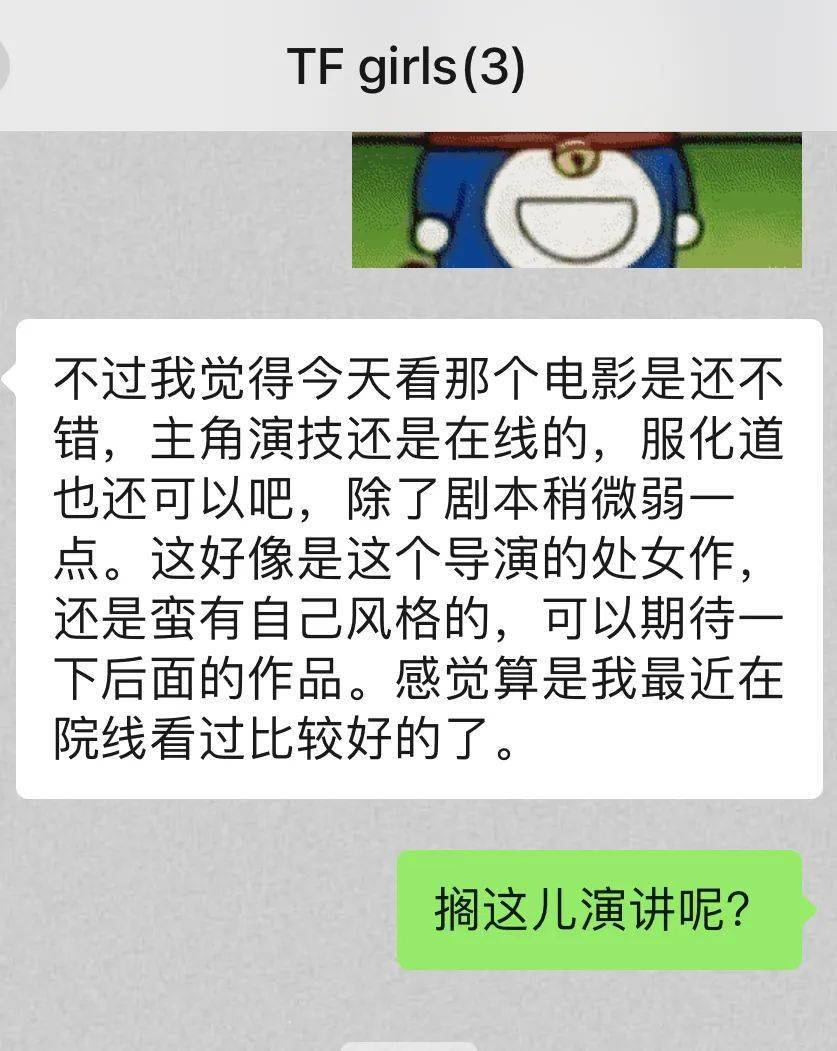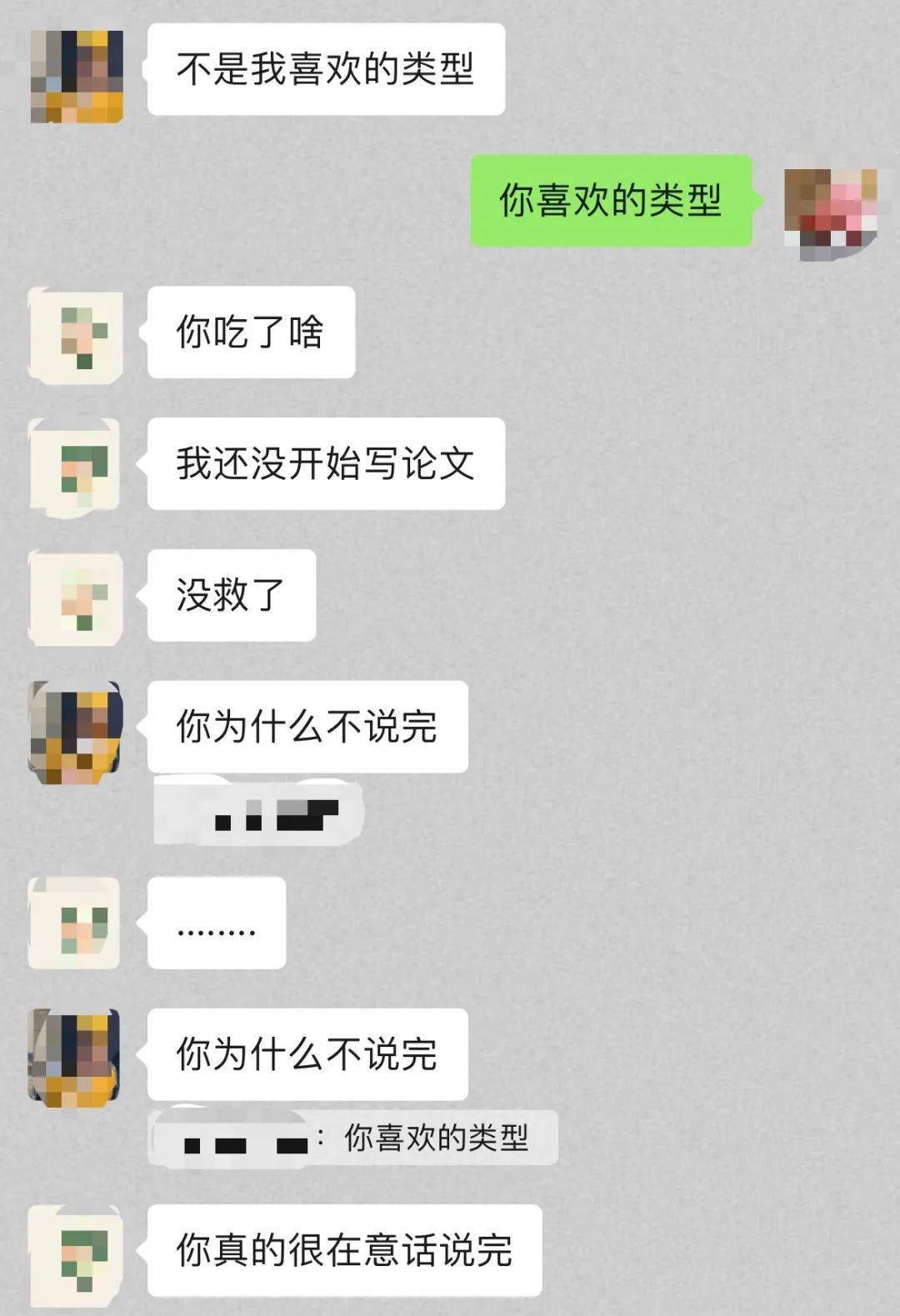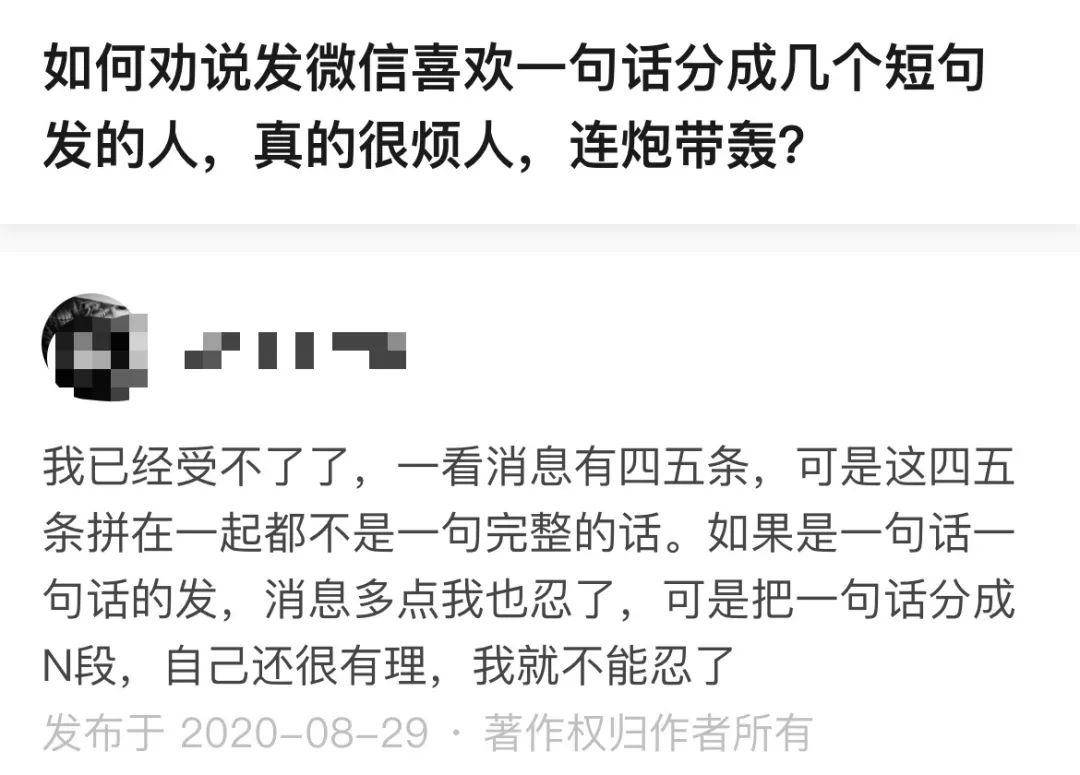Editor’s lead: Have you noticed that the way people chat has become short sentences, especially now that the chat between young people and young people is composed of short sentences full of screens, and the fragmented expression of this language can be displayed. The mood of the expresser; the author of this article has conducted a detailed analysis of this phenomenon, let’s take a look together.
Editor’s lead: Have you noticed that the way people chat has become short sentences, especially now that the chat between young people and young people is composed of short sentences full of screens, and the fragmented expression of this language can be displayed. The mood of the expresser; the author of this article has conducted a detailed analysis of this phenomenon, let’s take a look together.

“The other party is typing…” Two words popped out of the chat box.
“The other party is typing…” The chat box continued to pop up three words.
After five messages, I finally received a complete sentence.
You and I, who stay on social media every day and keep inputting and outputting messages, shouldn’t be unfamiliar with this way of chatting (a sentence is split into multiple messages to send).
When hundreds of millions of people have become accustomed to a communication method such as online communication, many noteworthy features have emerged throughout the process, such as the language inflation discussed earlier, the proliferation of emoticons, and the irregular use of punctuation.
In addition, “fragmented expression” is also a common phenomenon of communication. When chatting on the Internet, many users, especially young people, are becoming more and more accustomed to sending several messages in one sentence, and even one word and one punctuation should be a separate message. This is unthinkable in the past SMS era of bargaining.
In this issue, the All Media Group pays attention to the interesting phenomenon of fragment expression in social media chats, and analyzes the underlying causes and communication characteristics.
- Language fragments in online chat
The splicing of fragments of a sentence into different sentences is not born out of social networks.
Recall the modern poem “Rain Alley” I read in middle school. The poem “Holding a paper umbrella, alone/wandering in a long, long/lonely rain lane” is also in a similar format. However, the fragments in today’s online communication are obviously not out of the need for literary expression and poetic beauty like the cross-line of poems.
Today’s cross-line messages are mostly like this: the top of the dialog box always shows that the other party is typing, but the message received is a few words that keep popping up.
A common scenario is: After a lunch break, I picked up my phone and took a look. In the dialog box, there were dozens of unread messages sent by my friends. I quickly opened it. After climbing up the stairs to read, I found that only three complete sentences were actually spoken.
This situation is probably often seen in your chat history. With the transformation of communication technology and the growth of social media, fragmented language expression has become more and more common. This kind of “fragment” is not a bombardment of a complete sentence, but a sentence is divided into several messages and sent out separately.

After eight messages, I still don’t know who I met
This fragmented expression is a habit of many people when chatting online, but it is not universal. Most of it appears in specific communication objects and scenes.
For example, when talking to familiar friends and relatives, it may be easier to break out a sentence at will when talking about daily topics; while in more formal scenarios such as work communication, the frequency of similar expressions may drop a lot.
When chatting with friends, on some more lively and relaxed topics, such as following stars, watching dramas, and sharing anecdotes, your conversation may look like this:

Which star girl has never sighed that her brother is so handsome
And in some formal workplaces, or when communicating with teachers or elders, you are more likely to edit the good news in advance, carefully consider each word, and then send the news.

When talking to the teacher, I always want to put everything into a message
Of course, apart from objects and scenes, fragmented language is also nourished by the special attributes of social media.
Nowadays, the commonly used social software was also a typical place for fragmented expression at the beginning of its birth, and it assumed more auxiliary social functions. With the changes in technology and environment, social media has gradually evolved into a major social tool, even surpassing offline communication, which also bears a deeper need for communication.
At this time, in some special scenes, fragmented expressions can help emphasize emotions and become emotional magnifying glasses. For example, when talking with a friend about academic troubles, it may be like this:

Despair overflows the screen
In a similar special context, a sentence composed of cross-messages can strengthen the special mood of the speaker in the scene and set off a specific atmosphere.
In short, for fragmented expression that is becoming more and more common, some people regard it as a normal expression habit, which is simple, stress-free, and interesting. Others regard it as an inappropriate way of communication, believing that it increases the pressure of information overload and makes people one step away from “speaking well.” And more often, it is an invisible phenomenon that has not attracted special attention.

Zhihu has also discussed this issue.Image source: Zhihu
- Why should one sentence be sent in several messages? 1. The impact of changes in media channels
In the answers to related questions about Zhihu, some netizens said: “People who have been tortured by text messages (that’s me) naturally like to develop separately when they use WeChat chat software.”
This answer reveals a background in which fragmented expression can be understood-changes in media channels have reduced the cost of communication.
In the pre-social media era, people used text messages, letters, emails, etc. to overcome the obstacles to offline communication, but most of these methods limited the way of expression from different sides: one text message and five text messages correspond to different costs. The mail has a fixed format, and the writing procedure is more cumbersome. It takes time to write it, send it, and wait for a reply.
Nowadays, the popularization of the Internet and the dominance of social media have ended the era of “inch-and-inch” communication, and people have been liberated from restrained and prudent communication. Therefore, sending a sentence into several messages may be a kind of “retaliatory consumption” for remote communication, and it is also a new way of communication in new media channels.
Adapt to online social communication scenarios
Fragmented communication is also an adaptation to online communication scenarios. In the online chat scene, in addition to the words spoken, the tone, expression, expression and eyes of the other party can all convey effective information at the same time. These are all difficult to achieve in the online space.
From this point of view, fragmented speech can strengthen the tone to a certain extent, convey information other than text, and adjust the atmosphere of the chat.

A message that is too long inevitably makes people feel like they have received a small composition
More specifically, the cutting of a sentence is not done randomly. It is often divided into different fragments such as adjectives, nouns, pronouns, and even a punctuation, each corresponding to a different meaning. The separation of elements allows different language fragments to be separated, which can help the other party to get to the point of speaking.
For example, when “I am super xxx!” becomes “I”, “super”, “xxx”, and “!”, the latter seems to convey the emotional characteristics of the words more clearly on the small mobile phone screen.
In addition, fragmented expressions are also compatible with the immediate nature of social media communication. In instant messaging software, it is a universal need for communication to maintain the presence status and let information arrive in time in the shortest possible time.
Therefore, no punctuation, typos caused by the input method, no withdrawal, and corrections in the second line are common phenomena in instant communication; and short sentences of three or five characters are arranged line by line, which reduces editing and The difficulty of modification is also a kind of “meeting” to the immediacy characteristics.[1]
Become a discourse symbol for online communication
Guo Qingguang’s “Communication Course” mentioned that in human social communication activities, information is the unity of signs and meanings, signs are the external forms or material carriers of information, and meanings are the spiritual content of information.[2]
Communication in social media is a process of symbolic interaction, and language symbols are the most important type of presentation. From the perspective of symbols, the information transmission form of “dividing a sentence into multiple messages” is also an angle to understand its meaning and meaning.
Compared with a long message that is composed of paragraphs and sentences, the symbol of a short sentence message is a more direct and simple expression. Long sentences seem to require more attention and energy, while short sentences are easier to understand. Each one conveys clear meaning and can reduce the pressure and burden of communication.
From this perspective, a sentence that is divided into blocks is a special text symbol-like voice, emoticon symbols, etc., it undertakes the needs of online expression and exerts different communication functions.
This symbol also has a role other than the content itself. In addition to the aforementioned adjusting the chat atmosphere, strengthening the tone and emphasis, and catering to the immediacy, there is also the effect of maintaining the consistency of the words in the chat, and even grabbing attention.
Imagine a scenario where you want to say an important thing to your friend, but when you are still typing and editing in the chat box, the topic has been transferred to a new thing by your friend, or your friend can’t wait, exit first The chat interface.

If you and your friends like to post short sentences, your chat may become chaotic due to multi-threading
Therefore, in order to overcome this “communication dislocation” during online chat, it is better to preemptively send the message while chatting. The disassembled discourse symbol conveys the message itself, and also keeps the other party in a state of receiving the message, indirectly maintaining the stability of the discussion topic.
On social media where “squandering flowers are becoming glamorous”, this may indeed be a way to ensure smooth and timely communication.
A piece of puzzle in a fragmented world
From a broader perspective, the fragmented expression of chat in social media can be regarded as a specific manifestation of fragmentation.
Fragmentation is a commonplace and real communication feature in contemporary digital life. It grows together with the innovation of information communication technology, and affects our way of thinking, media channels, and speech expression.
Social media is an important soil for fragmented information. Different from the public domain in the traditional sense, the virtual space constructed by social media represented by WeChat has the characteristics of information fragmentation. In WeChat chats (especially group chats), the behavior of discussion participants is close to a kind of “square expression”, and everyone can express it at any time, so the utterance expression is often discrete and diffuse.[3]
Diffusion expressions are everywhere here. From the previous words such as “unminded jueli” to the abbreviations such as “yyds” nowadays, people seem to always tend to use the least words to convey meaning, and they are used to constructing common uniqueness with special symbols Discourse space.
After getting used to the ubiquitous fragmentation, people’s nerves may not be so sensitive to splitting a sentence into several messages, and they naturally accept and use this method unconsciously—fragment, right? Familiar.
Fragmented expression promotes or hinders dissemination?
For a long time, people’s attitudes have been mixed with regard to the way to split a sentence into multiple messages.
People who are accustomed to use this as a way of decompressing online communication, adding a bit of relaxation and fun to the chat, and reducing the difficulty of reading and understanding. However, there are also opposing attitudes that an increasing number of messages will at least increase the burden of information in terms of quantity, and also eliminate the already broken language.


Different views on this behavior.Image source: Zhihu
Factors such as attitudes towards social media and language habits have affected people’s different judgments. But at least it is undeniable that this habit seems to have been embedded in our daily communication unknowingly and has become commonplace.
Back to the origin, chat is a process of information transmission. From the perspective of information dissemination, this fragmented expression also has two possible directions.
One is positive-fragmented expression can help both parties to understand information more easily and efficiently in online communication. In social media networks with information overload, this can be a self-controllable way to decompress.
The other is the opposite direction, that is, fragmented news may hinder information dissemination, cause misunderstandings, and reduce efficiency.
How to understand this misunderstanding?
On the one hand, the behavior of “sending a sentence into multiple messages” is not accustomed to and accepted by everyone. Therefore, when this kind of news appears in untimely occasions-such as in formal group chats, at work, or facing a communication partner who attaches great importance to communication norms, it may accidentally cause the other party’s impression of themselves to be reduced, even if this Not your true image.
On the other hand, the dispersed language itself can also cause misunderstandings. In the scattered words and sentences, the sequence of the utterances is easy to be confused, and the logic is more likely to be unreasonable. Waiting until the person on the opposite side of the chat box assembles these fragments and understands it clearly, which may consume more energy than typing out a paragraph.
Of course, social media is not static, and some of its own functions are directly/indirectly helping to improve the efficiency of information dissemination. For example, the frequently used WeChat “quote” function can allow people to mark key points in cumbersome messages. When faced with a sentence composed of multiple fragments, the recipient is also more likely to grasp a symbol to respond.
In short, this microscopic phenomenon of “a sentence is divided into multiple messages” is also a perspective for us to look beyond the established framework to examine social media and self-expression. Regardless of the attitude toward this report, the language symbols that are formed into sentences or fragments are actually the need for people to seek communication and connection.
At least, our common expectation is a more efficient, friendly, and less big communication space.
Chat fragmentation seems to have become a very common phenomenon in our lives. Are your chat records also full of fragmented messages? What do you think about this phenomenon of news fragmentation?
Reference link:
Weijing Lu: Media, Scenes, People-Research on the Impact of WeChat Use on Interpersonal Relationships[D], Nanjing Normal University, 2019
Guo Qingguang: Communication Course[M]: Beijing: Renmin University Press, 2002
Tang Jiayi: Scenes and dialogues: How does the WeChat group discussion affect attitudes? ——Micro-interpretation framework based on comparative experiments[J], Journalist, 2019(11): 35-47
Official Account: Quan Meipai (ID: quanmeipai)
This article was published by @全传媒派 Original to Everyone is a Product Manager.Reprinting without permission is prohibited
The title picture comes from Unsplash, based on the CC0 protocol
































































You must log in to post a comment.